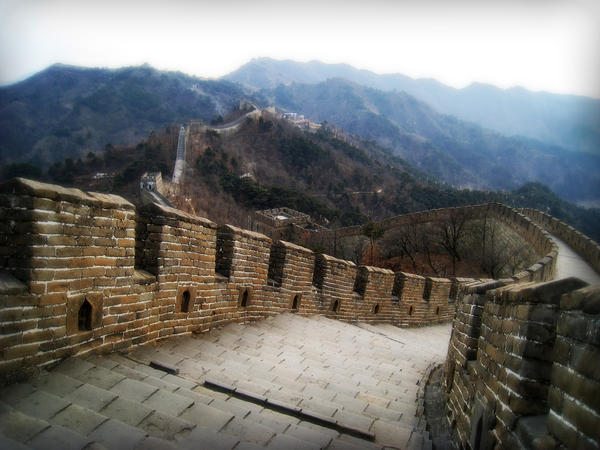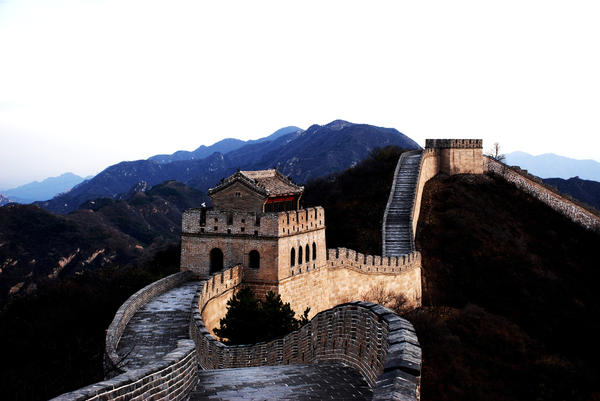The Great Wall of China is one of China’s most popular symbols, as well as one of the most stunning feats of humankind. Spanning 6,000 km across China, it is composed of battlements made of natural materials such as wood, stone, brick and rammed earth. Moreover, it was successfully built over different landforms (deserts, grasslands, mountains and plateaus). Although some of its sections are now in ruins or have disappeared, the Great Wall of China has survived the past 2,000 years and is currently one of China’s most popular tourist destinations.

- The Great Wall of China, Northern ChinaWanderingtheWorld (www.LostManProject.com) / Foter.com / CC BY-NC
The Great Wall of China (otherwise known as “The Long Wall of Ten Thousand Li”) was built in order to prevent barbarians from entering the Celestial Empire (Imperial China). While the exact date of the Great Wall’s construction is unknown to this day, historical evidence show that the ancient Chinese were already erecting fortifications as early as the Chunqiu Period (722 – 481 BC) and the Warring States Period (453 – 221 BC).

- The Great Wall of ChinaSmokingPermitted – “Cosa sono? La bambina dei no” / Foter.com / CC BY
It is believed that certain parts of the Great Wall were built in response to feudal conflicts. The Northern Wei Dynasty built the portion of the wall found in present-day Shanxi Province in 408 BC to ward off invading Qin forces. This structure was followed by those built the Qin, Yan, and Zhao around 300 BC as protection against northern barbarians.

- History of The Great Wall of ChinaViewminder / Travel Photos / CC BY-NC-ND
In 220 BC, Qin Shi Huang constructed additional fortifications that would connect the individual sections of the Great Wall to one another. He also extended the western section of the wall all the way to present-day Lanzhou. The threat of invasion by the Mongols, Turks, and Tunguz prompted the Han Dynasty (206 BC) to further extend the Great Wall. During the reign of Emperor Wudi (140-87 BC), the wall reached Dunhuang all the way in the west to the Bohai Sea in the east. The building and upkeep of the Great Wall was stopped after the Han Dynasty fell in 220 AD. China at this period no longer saw the need for a defence policy because it was already enjoying immense military power.
The construction of the Great Wall resumed under the Ming Emperors (1368-1644). Having just expelled the Mongols from China, they saw the need to protect China’s northern frontier from future attacks. As a result, druing the Ming Dynasty, the wall was extended by up to 5,650 km. Strongholds were built at strategic points in order to defend the towns along the wall.
Passageways were constructed along the top of the wall to help troops and imperial couriers travel faster. At present, both ends of the Great Wall are marked by a monumental watchtower. The wall’s eastern monument, The First Door under Heaven, is situated in Shanhaiguan. The wall’s western monument, The Last Door under Heaven, is located in Jiayuguan
One of the most popular misconceptions about the Great Wall is that it is the only structure on Earth that can be seen from outer space. It is true that the Great Wall is a massive structure, but it cannot be viewed from outer space. According to NASA, it is impossible for a person to see any man-made object when he is away from the Earth’s orbit. Nonetheless, many people continue to believe the aforementioned myth.
Indeed, the Great Wall of China is one of the world’s most impressive structures. It proved to be very beneficial to the ancient Chinese not only because it protected China from external threats, but also because it helped them develop their culture. Isolated from its neighbors by the Great Wall, China was able to come up with its own distinct culture and national identity. Had China been invaded by foreigners, chances are, there would be no such thing as Chinese culture.
This guest post was a courtesy of Hotel Tadoussac. For those visiting the Vancouver area in the near future, be sure and check out Victoria – as it has much to offer travelers of all ages!






